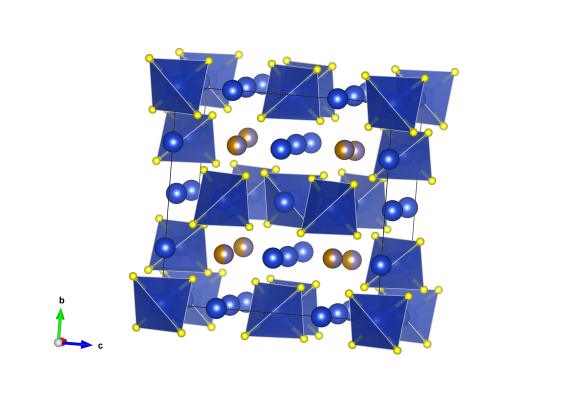A World Cup inspired post – Germanite
Yes, we missed a trick at Crystallography365 towers not having a bit of a World Cup theme running through this month, but it's never too late to jump on a band wagon (at least for the weekend) eh? So here to kick things off is Germanite:
What does it look like?

Image generated by the VESTA (Visualisation for Electronic and STructural Analysis) software http://jp-minerals.org/vesta/en/
What is it?
Germany actually has an element named after it, Germanium. But as the crystal structure of Germanium is the same as diamond, we thought we'd pick something a bit more interesting to write about today (also as suggested by @sonicgu on twitter).
Gemanite was actually named because of the (relatively) large amount of germanium (purple atoms) found in this mineral. However, it is mainly made of copper (the blue atoms) that bond with the sulfur (yellow atoms) in the structure. Germanite is quite a rare mineral, and was discovered in a mine in Namibia. Although it is named for its content of germanium, it is not the main source of this element for industry (germanium is an important semiconductor). Most germanium comes from impurities found in galena (lead sulfide).
Where did the structure come from?
The structure of gemanite was determined from powder X-ray diffraction in 1984 by Tettenhorst and Corbato. It is #9000940 in the Crystallography Open Database.






